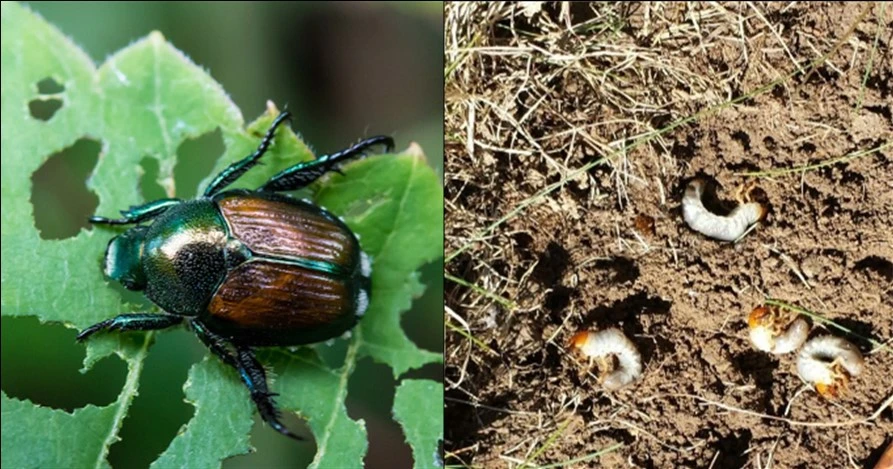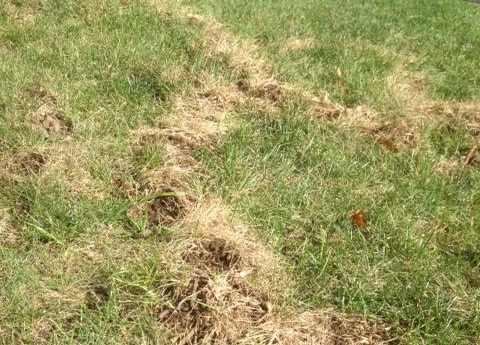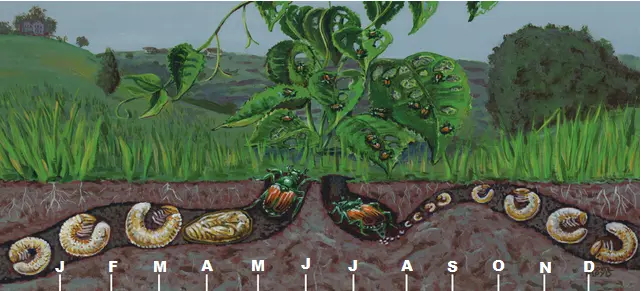 Japanese Beetle Life Cycle
Japanese Beetle Life Cycle
Japanese beetles have a short life span and have only one generation per year. They begin to emerge from the soil in late June or early July and can be active into September. Peak populations of these beetles are typically found in mid to late July but will vary each season with the weather. Each female can lay 40-60 eggs, so with large beetle populations you could have thousands of eggs in your lawn. The eggs usually begin hatching in early or mid August. Their larvae (white grubs) then emerge and begin feeding through the rest of summer and into fall. As the soil temperatures start dropping, the white grubs move deeper into the soil to overwinter. The lay dormant until spring when the soil warms, then they rise in the soil and begin feeding again. The grubs eventually stop feeding and create a small pocket in the soil for them to pupate (transform) into the adult Japanese beetles. The cycle then starts over with the beetles emerging again in late June or July.
JAPANESE BEETLE CONTROL:
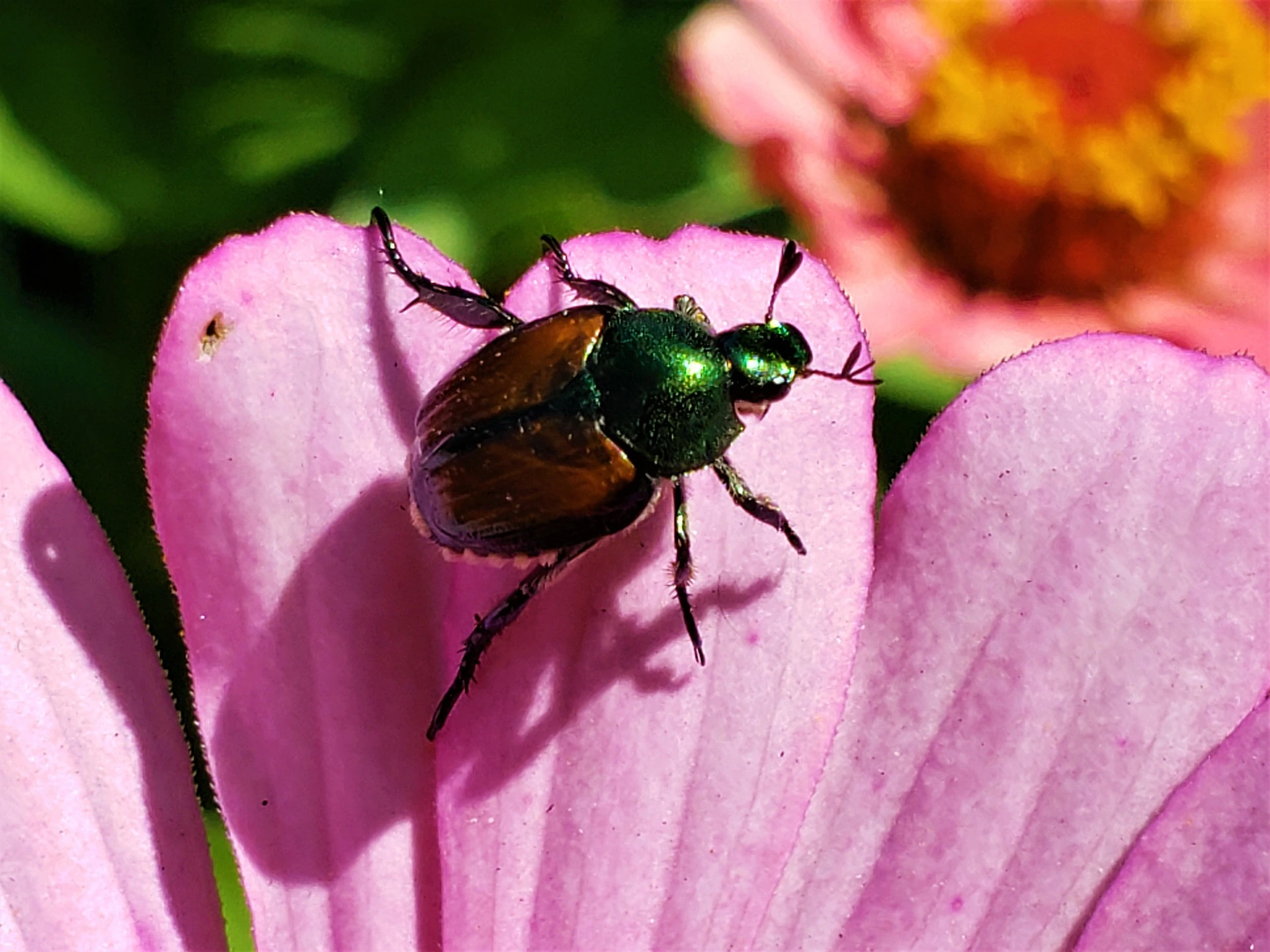
Japanese beetles feed by chewing on the leaves of over 350 different types of plants. They eat the entire leaf except for the veins and can defoliate many different plants and trees. When they cause extensive damage to trees, they can turn them brown and cause their leaves to drop or make them appear scorched by fire. Some of the Japanese beetles favorite plants to feed on are Japanese maple, birch, rose, crabapple, purple-leaf plum, mountain ash, viburnum, linden, grapes, and basil. Smaller plants like roses can be devoured in a few days depending on the number of beetles feeding. We can protect your important trees and plants from Japanese beetles, however we do not treat any edible plants or vegetable gardens.
Treating Japanese beetles will not prevent white grubs.
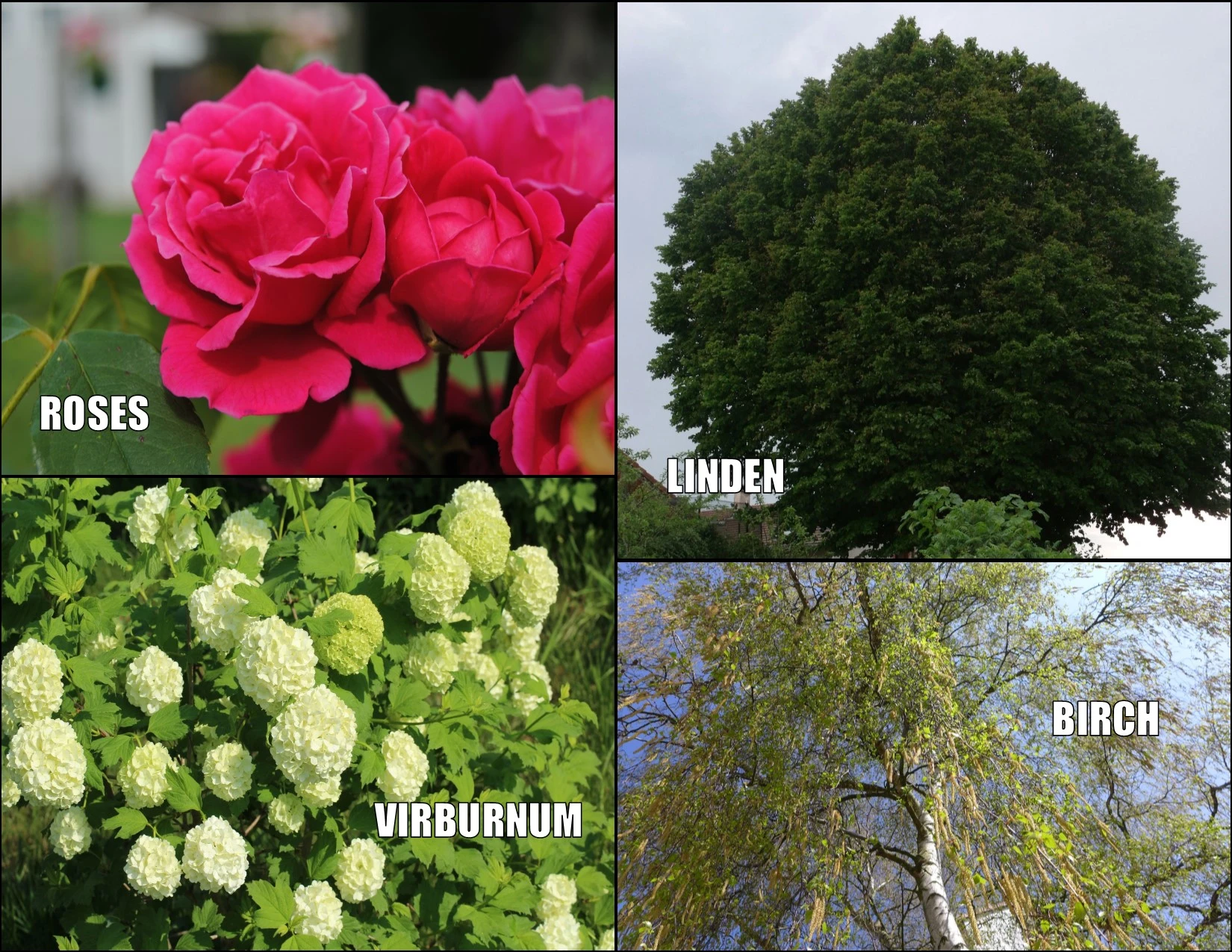
We offer a Japanese beetle treatment that is a one-time spray and time this when they become active on your property. We are able to treat any trees and plants up to 20 feet in height depending on their location. This will control any Japanese beetles present and greatly reduces their numbers for up to 30 days. You may still see beetles fly into your property after the treatment, but once they land on the treated plants they will be controlled.
For larger trees we offer a preventive soil drench to the base of the tree. The tree then absorbs the product through its roots and moves it to the leaves. After insects take a couple bites they are controlled. The tree needs time to uptake the product, so large trees should be treated in fall for the next season. Some smaller trees can be treated in spring.
WHITE GRUB CONTROL:
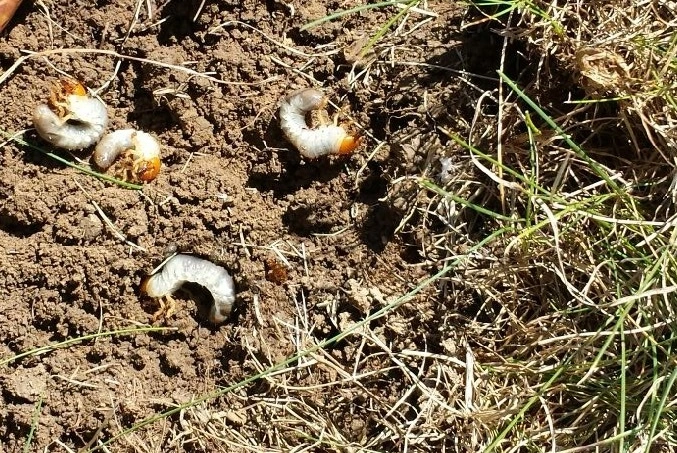
White grubs are the larvae of many types of beetles, the most common in our area being the Japanese beetle and May/June beetle. They live in the soil below the turf and feed by chewing on the roots of the grass. Their feeding separates the grass blades from the roots. This leads to brown and dead spots in the lawn since it can no longer uptake the proper water and nutrients. If you grab an area damaged by white grubs, it usually pulls up easily similar to a loose carpet. These brown areas may not show up right away if we are receiving the proper amount of rain or in irrigated lawns as the blades will still have enough water to survive. Some animals are also attracted by white grubs (e.g. skunks, racoons, moles, crows) and will rip up a lawn to feed on them.
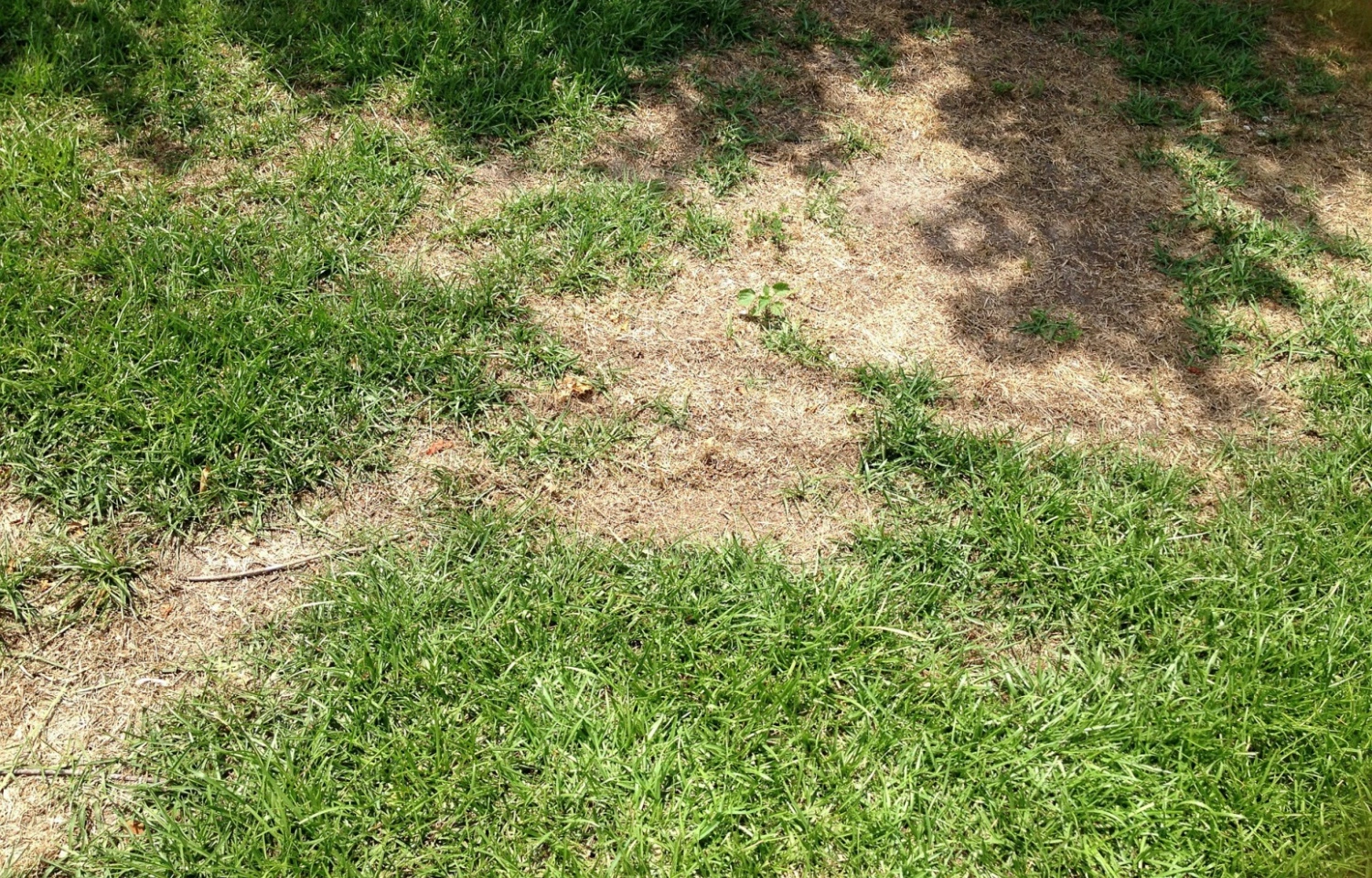
We offer preventive and curative treatments for white grubs. Preventive treatments are more effective as it is easier to control them when they are in their younger stages and just emerging from the eggs. If you have a lot of Japanese beetles each year or have had white grubs damage your lawn in the past, you may want to have a preventive treatment done yearly. Curative treatments are effective at stopping damage once the white grubs have already emerged and started feeding. The downside to this is that the damage to your lawn is already done and some repair is usually needed. Another drawback is the animals that invade to feed on the white grubs can rip up a lawn in a short amount of time, which could lead to major repairs.
Treating white grubs will not prevent or stop moles from invading. (see below)

